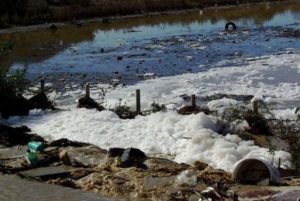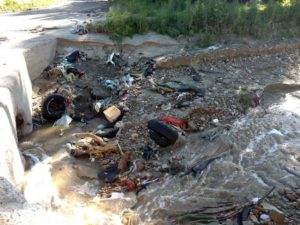November 13, 2017
On November 3, 2017, Senator Ben Hueso led an informational meeting in Imperial Beach with a select committee on California-Mexico cooperation to discuss the water quality and reliability in the Tijuana River Valley, Salton Sea, and beyond. The purpose of the meeting was to discuss the Tijuana River Border Pollution Control Project and restoring the waters of the Tijuana River, Estuary, and Imperial Beach.
The Committee heard from various agencies and stakeholders including:
- David Gibson, Executive Officer from the San Diego Regional Water Quality Control Board
- Sally Spener, Foreign Affairs Officer from International Boundary and Water Commission
- Doug Liden from the US Environmental Protection Agency
- Toribio Cueva, Project Manager at North American Development Bank
Discussions outlined various solutions and critical needs faced, the EPA’s role with regard to the TJ River Valley and its border water programs, Tijuana’s biggest challenge of the replacement of the San Antonio de los Buenos water treatment plan and provided a general overview of the city’s sewage system and challenges.
Attendees included:
- Mayor Serge Dedina from Imperial Beach
- Mayor Alex Cardenas from El Centro
- Councilmember Norma Castaneda
- Councilmember Mike Donovan
- Councilmember Helen Noriega
- Councilmember Mark West
- Former Senator Denise Moreno Ducheny
- Senator of Baja California Ernesto Ruffo
- Tijuana Councilmember Marco Corona
 To listen to the hearing’s presentations and discussion, visit: http://sd40.senate.ca.gov/CA-Mex-Info-Meeting
To listen to the hearing’s presentations and discussion, visit: http://sd40.senate.ca.gov/CA-Mex-Info-Meeting
On the same topic, the International Boundary and Water Commission, United States and Mexico (IBWC) directed an investigation of a sewage spill in Tijuana earlier this year. The following recommendations were developed for the IBWC Minute 329 Binational Workgroup with the purpose of preventing future incidents:
- Tijuana’s State Commission of Public Services (CESPT) need to replace and acquire proper equipment.
- Plans to install flow measuring systems in Rio Almar and Tijuana River.
- Develop a notification protocol to facilitate communication between government agencies in the U.S. and Mexico.
- An infrastructure assessment to evaluation the infrastructure’s condition and sanitation.
- Design and implement a rehabilitation plan for the rehabilitation of sanitation infrastructures.
The Chamber continues to advocate for a work plan between the U.S. and Mexican governments to increase measurable efforts in mitigating pollution and minimizing/eliminating water deficits to the U.S.